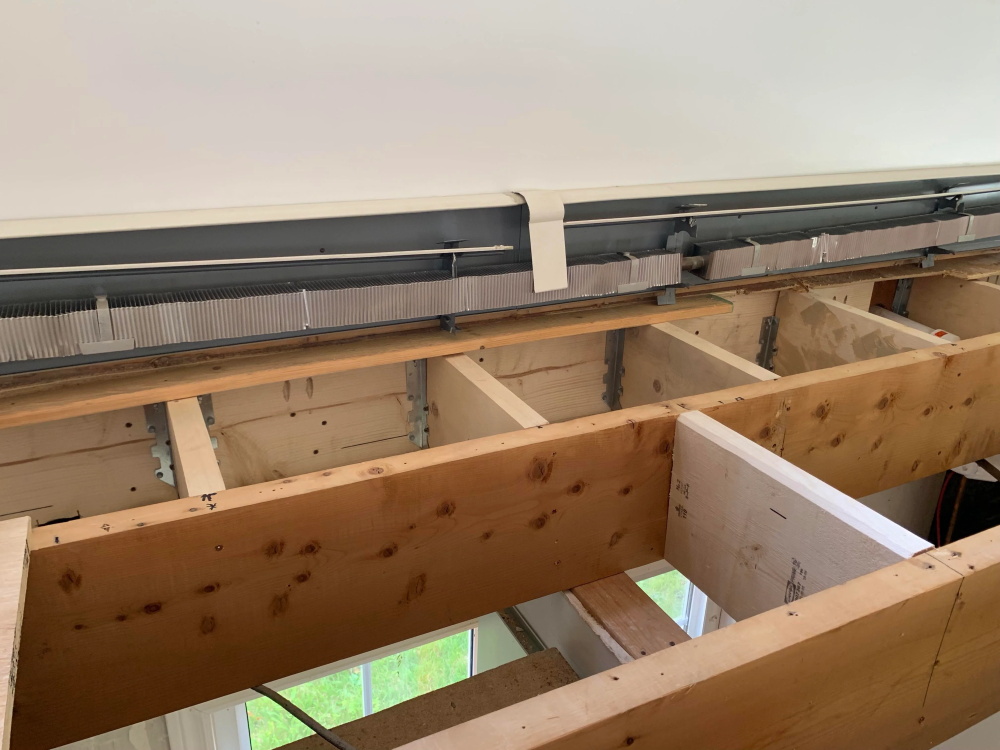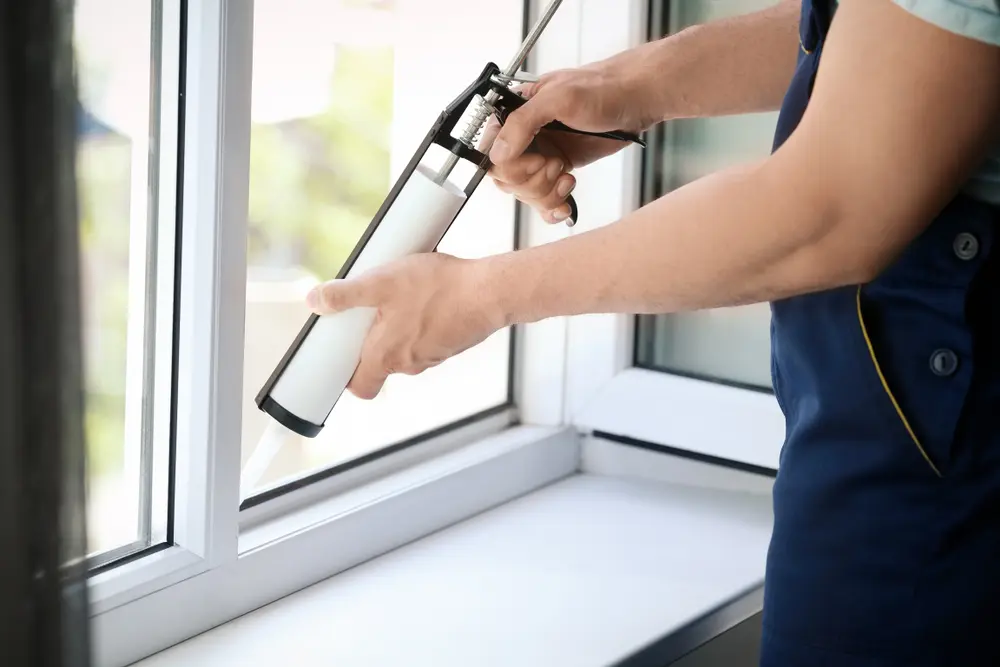Contents
If your subfloor is damaged by water or rot, you may need to replace it to ensure the stability of your floor and wall. The subfloor is the solid base that supports the floor covering and the wall. Replacing a subfloor can be a big project, especially if you have to remove the wall. However, in some cases, you can replace part of the subfloor without taking down the wall.
Wall and Floor Basics
The wall and floor are connected in a way that makes them structurally strong. The typical structure of a home system looks like this from bottom to top:
- Joist: This is a long, horizontal piece of wood, usually 2×8 or 2×10 inches, that holds up the flooring.
- Subfloor: This is nailed to the top of the joist. It is usually plywood or OSB that is 19/32-inch to 1 1/8-inch thick. The subfloor may run continuously across the joist, or two sections of subfloor may meet on a joist.
- Underlayment: Some floors have a thin underlayment that helps to smooth the subfloor for the floor covering. Not all floors have this.
- Floor Covering: This is the visible layer of the floor, such as laminate flooring, vinyl tile, luxury vinyl plank, or any other type of floor.
- Bottom Wall Plate: This is the lowest part of the wall. It is usually an 8-foot-long, 2×4 piece. Wall studs are nailed vertically to the bottom wall plate and the wall plate itself is nailed (downward) into the subfloor, with nails even extending into the joist.
All items except for the underlayment and floor covering are under and nailed to the bottom wall plate.
Tip: When you install the new subfloor, use screws instead of nails to prevent floor movement and cracks in the plywood. Use code-approved screws for 3/4 inch plywood subfloors, such as #8, #9, #10, or #12.
Removing the Subfloor Under Walls
Removing subfloor while the wall is in place is hard because the subfloor is trapped under the wall. It is like sliding out a book nailed to the ground while someone is standing on it. You can do it, but it takes some work and patience. Remember that if you want to keep the wall in place, you can only remove part of the subfloor—to remove the whole subfloor along a wall, you will need to remove the wall.
Before You Begin
Choosing the right replacement subfloor may seem easy but it is important for the quality of the repair. You want to match the thickness and material of your existing subfloor as closely as possible. You also want to measure and cut your replacement subfloor before you remove the old one.
Safety Considerations
- Wear safety glasses and gloves when working with power tools and sharp objects.
- Turn off any electrical circuits that run through or near your work area.
- Use caution when cutting near pipes or wires that may be hidden under your subfloor.
- Dispose of any nails or screws that you remove from your subfloor safely.
Instructions
Remove the Baseboard
Use a flat pry bar to gently remove the baseboard and any quarter-round trim near where you want to remove the subfloor. Set these pieces aside.
Remove Sections of Drywall
Use a utility knife to cut out sections of drywall above where you want to remove
the subfloor. Cut along a stud so that you can reattach new drywall later. Set these pieces aside.
Remove Floor Covering and Underlayment
Use a circular saw or oscillating tool to cut out sections of floor covering and underlayment above where you want to remove the subfloor. Cut along a joist so that you can reattach new floor covering and underlayment later. Set these pieces aside.
Cut Out Damaged Subfloor
Use a circular saw or reciprocating saw to cut out sections of damaged subfloor along where you want to remove the subfloor. Cut along a joist so that you can reattach new subfloor later. Set these pieces aside.
Slide Out Subfloor Under Wall
Use a pry bar or hammer to loosen any nails or screws that hold the subfloor under the wall plate. Then, use a flat pry bar or chisel to slide out the subfloor from under the wall plate.
Install New Subfloor
Use a drill or screwdriver to attach the new subfloor to the joist with screws. Make sure the screws are flush with the surface of the subfloor. Slide the new subfloor under the wall plate and secure it with screws.
Install New Underlayment and Floor Covering
Use a circular saw or oscillating tool to cut out sections of new underlayment and floor covering that match the ones you removed. Use a staple gun or adhesive to attach the new underlayment to the subfloor. Use nails or glue to attach the new floor covering to the underlayment.
Install New Drywall
Use a utility knife to cut out sections of new drywall that match the ones you removed. Use a drill or screwdriver to attach the new drywall to the studs with screws. Make sure the screws are slightly below the surface of the drywall.
Install New Baseboard
Use a miter saw or hand saw to cut out sections of new baseboard that match the ones you removed. Use a nail gun or hammer to attach the new baseboard to the wall with nails. Use wood filler to cover any gaps or nail holes.
Finish and Paint
Use joint compound and drywall tape to cover any seams or screw holes on the drywall. Sand the drywall until smooth. Apply primer and paint to the drywall and baseboard as desired.
When to Call a Professional
You should call a professional if:
- You are not comfortable with using power tools or working with electricity.
- You need to replace more than four contiguous bricks on a load-bearing wall.
- You notice cracks in the brick or along the mortar lines in a staircase pattern, which may indicate foundation problems.
- You have any doubts about your ability to do the job safely and correctly.
Frequently Asked Questions
- How do I know if my subfloor is damaged?
Some signs of subfloor damage are:
- Sagging or uneven floors
- Creaking or squeaking floors
- Moldy or musty smells
- Soft or bouncy spots on the floor
- Visible water stains or rot on the floor
- How much does it cost to replace a subfloor?
The cost of replacing a subfloor depends on several factors, such as:
- The size and extent of the damage
- The type and quality of the subfloor material
- The type and quality of the floor covering material
- The labor and skill required for the job
According to HomeAdvisor, the average cost of replacing a subfloor ranges from $500 to $5,000, with most homeowners spending between $1,500 and $3,000.
- How long does it take to replace a subfloor?
The time it takes to replace a subfloor depends on several factors, such as:
- The size and extent of the damage
- The type and complexity of the floor covering material
- The availability and skill of the workers
- The drying time for any adhesives, primers, paints, etc.
According to HomeAdvisor, replacing a subfloor can take anywhere from a few hours to several days, depending on these factors.












